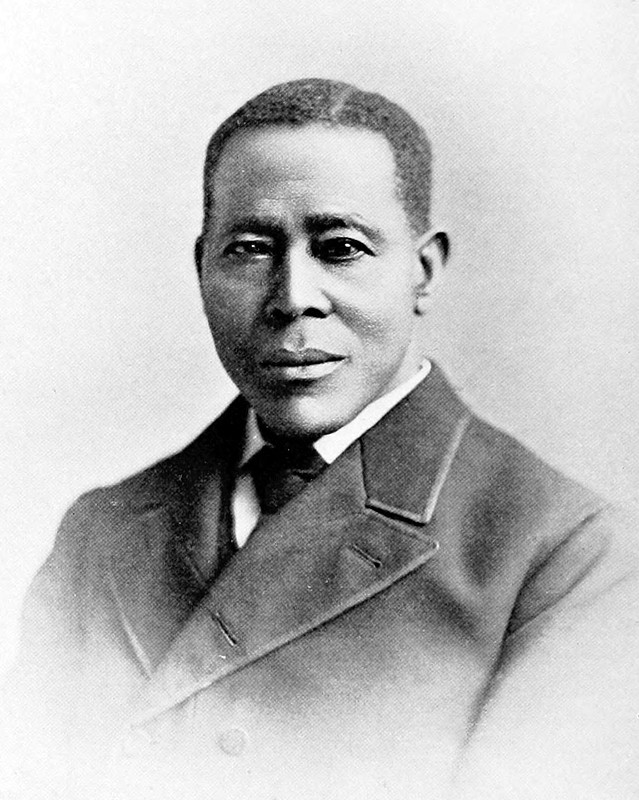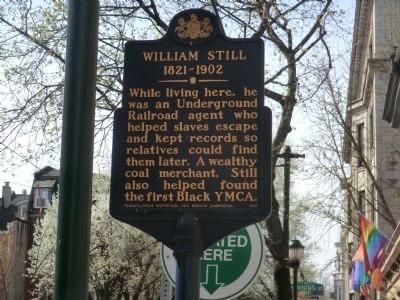William Still: Pennsylvania Historical Marker (Also briefly the home of Henry 'Box' Brown)
Introduction
Text-to-speech Audio
William Still was an active Civil Rights abolitionist in the mid 1800s and was an integral player in helping many slaves escape to freedom through the Underground Railroad. He worked tirelessly in many different ways to better the African American community throughout his entire life. Born the son of former slaves, Still's passion for freedom and justice was rooted deep within him. Still taught himself to read and write which furthered his work as an abolitionist and he published works speaking out against the injustices placed upon the African American community. Often referred to as the Father of the Underground Railroad, Still's historical land-marker is placed in front of his home at 244 S. 12th Street in Philadelphia which served as a stop on the Underground Railroad for many years.
Images
Portrait of William Still that was published in 1898. This photo appears to have occurred in Still's 40's or 50's but the exact date of the portrait is not provided.

William Still's Pennsylvania Historic Marker which is displayed in front of his former home in Philadelphia, PA.

Backstory and Context
Text-to-speech Audio
William Still was born on October 7, 1821 in New Jersey; the youngest of 18 children to his parents, former slaves, Levin and Charity Still. Growing up, Still was not provided the resources to a formal education and schooling, so he took on the task of teaching himself how to read and write (1). Little did he know at the time, but this would give him a large advantage and help him in his future civil rights activism and abolitionism. In 1844, Still made the move from New Jersey to Philadelphia, and just three years later in 1847, he would marry his wife Letitia Still and would begin working as a clerk for the Pennsylvania Society for the Abolition of Slavery (2). This is where Still’s abolitionist work would plant its roots.
Following the passing of the Fugitive Slave Act in 1850, the Pennsylvania Society for the Abolition of Slavery developed a Vigilance Committee to combat the act and in 1852, Still was appointed as chair of the committee (3). As chairperson of the committee, Still would begin his journey of helping and providing aid to fugitive slaves by using his house as a stop on the Underground Railroad. He kept extremely detailed records of the estimated 800 slaves passing through his stop on their journey to freedom, which helped him write one of the most well-known and accurate depictions of the Underground Railroad. His book, The Underground Railroad was published in 1872 and is treasured and revered today as, “the single best source of African-American experiences on the Underground Railroad” (4).
His book about his experiences working with and supporting the Underground Railroad are where we learn as much as we do about an odd figure from history, Henry 'Box' Brown. He likely stayed at Still's house until finding one of his own and then eventually leaving America entirely. In his long journey from Richmond this may have been the first time he was able to relax and reflect alongside Still. He was free, his injuries treated, he was not performing or speaking publicly here, but simply living. After the Fugitive Slave Act of 1850 was passed though, Brown did not feel safe anywhere in America. Whether he was staying with Still the whole time up until then is unclear, but the two men would not cross paths again.
Still, despite continuing his abolitionist efforts throughout the entirety of his life, was also a businessman. In 1861, he bought a coal yard and ran a coal delivery business where he became one of the most successful African American businessmen of his time and even owned real estate such as Liberty Hall (2). Still used his wealth from his business ventures to fund his philanthropic missions. In his later life, he continued his efforts of bettering life for the African American community in Philadelphia and became president of the Pennsylvania Abolition Society (4). Featured on his historical marker is how Still helped fund the opening and establishment of the first YMCA for African Americans in Philadelphia, which is still open and operating to this day (2).
Still passed away in 1902 due to heart complications, but his efforts and accomplishments will never fade (1). His written works are now on display both digitally and on exhibit at the Temple University Library after his family donated the original copies (5). His legacy will live on forever through the hundreds of African Americans he helped escape to freedom and the countless Black youth he paved a better life for. His written works continue to inspire and provide first-hand experiences of the people who lived through the Underground Railroad and will forever act as priceless artifacts for education. William Still was an incredible example of hard work, persistence, and philanthropy to build better opportunities for those around him and for future generations.
Sources
(1) Lewis, Femi. “Biography of William Still, Father of the Underground Railroad.” ThoughtCo. ThoughtCo, December 21, 2020. https://www.thoughtco.com/william-still-father-of-underground-railroad-45193.
(2) “William Still.” Wikipedia. Wikimedia Foundation, December 6, 2021. https://en.wikipedia.org/wiki/William_Still.
(3) Ishak, Natasha. “Meet William Still, the 'Father of the Underground Railroad' That History Forgot.” All That's Interesting. All That's Interesting, February 7, 2020. https://allthatsinteresting.com/william-still.
(4) Explorepahistory.com. Accessed December 15, 2021.https://explorepahistory.com/hmarker.php?markerId=1-A-3EB.
(5) “William Still's National Significance.” Omeka RSS. Accessed December 15, 2021. http://stillfamily.library.temple.edu/exhibits/show/william-still/historical-perspective/william-still---s-national-sig.
(6) William Still, The Underground Railroad (Philadelphia: Porter & Coates, 1872).
Public Domain
HMdb.org
